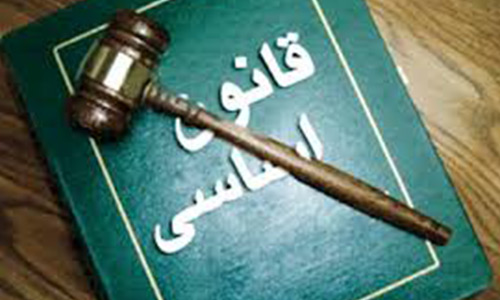One of the greatest human achievements in the field of social and political life is invention and enactment of rights and laws which largely regulated the human life. Though there are some differences among the various national laws but they have greatly organized the human life comparing to the past ages. Many of the differences originate from the mythical and factual interpretation of human life. The modern mentality has objectively focused on repelling losses and gravitating profits. Following the two approaches, the law scholars have identified specific origins for explaining philosophical foundations of their ideas and established different philosophical schools.
Based on historical evidence, in the age of stone humans lived in caves with no facilities. They always felt insecure due to lack of regulation to control the violence and aggression of powerful people. Eventually, the primeval societies were established and gradually human felt the requirement of strong social institutions and strong laws for human protection and basic order. They slowly, familiarized with the world “rights” and then it changed to a public phenomenon which had a sort of public nature encompassing all aspects of human life. Therefore, the vital social goals and important programs of the countries needed to include in constitutions of each country which was considered as a mother of all national laws. The mother law is the most fundamental law which provides the basic framework for social and political system of life within a particular geography. The constitution of Afghanistan is one of these laws which has evolutionally maturated and has high place in the legal system of the country, now.
The first constitution of Afghanistan was enacted in 1923 and it was just in form a byelaw. In fact, this was the first constitution created in 73 articles by King Amanullah Khan called “the essential byelaw of supreme government of Afghanistan” and then it was approved by Jalalabad Luyjurga in which 872 individuals participated from various parts of the country. The same the essential byelaw of supreme government Afghanistan was re-approved in 1925 in Paghman Luyjurga that had participated 1052 representatives.
The second constitutional draft was proposed in a Luyjurga which was held in 1930 during the kingdom of Nadir Shah with presence of 525 Afghan selected tribal elders. According to the famous historian of Afghanistan, Mr. Farhang,” first Nadir Shah held the Luyjerga in September of 1930 which was mainly composed of tribal elders and also some urban elders of Kabul”. In addition to endorsing the reign of Mohammad Nahir Khan, it appointed a panel of 105 members to ratify the constitution. This group of people which was called national assembly rectified the new constitution contained 110 articles and it was called “the essential principles of the supreme Afghan government”.
The third constitution was drafted in 1963 during the reign of Zahir Shah. He established a draft committee of seven individuals that were headed by Seyed Shamsuddin Majroh, the minister of Justice, who could prepare the draft constitution after one year work. When they completed the draft work, once again another committee of 28 individuals was assigned to review the draft and they completed their job in early 1964. Afterwards, the constitutional Luyerga combined of 454 people were invited to approve the final draft. Finally, the draft constitution was signed by the members of the Luyjirga in 11 chapters and 128 articles, and ten days later, the new law was put into effect by Zahir Shah.
The fourth constitution was approved during the presidency of Dawood Khan in 1976. After the overthrow of the monarchy system, Daud Khan abolished the previous constitution and appointed a team of 41 people to work on the new constitution. After the team completed the new constitution, a delegation of 20 individuals was assigned to re-read the draft text. Finally, in early 1977, the new constitution was approved in 13 chapters and 136 articles. In the meanwhile, Davood Khan was also elected as president in the same jirga.
The fifth constitution of Afghanistan was approved in 1980 under the name of “Essential Principles of Democratic Republic of Afghanistan. This constitution was approved in 68 articles by the revolutionary council of the democratic republic of Afghanistan and this was simultaneous with the first year when Afghanistan was occupied by the former Soviet Army. In fact, these basic principles lay down during the presidency of Babak Karmal resembling only the goals and ideas of the People’s Democratic Party.
The sixth constitution was approved during the presidency of Dr. Najibullah, the last President of the Afghan People’s party regime. The Luyjurga was held in 1988 and it rectified the constitution in 13 chapters and 149 articles and abolished the “Essential Principles of the Democratic Republic of Afghanistan”.
The seventh Afghan constitution was proposed by the Islamic State headed by Professor Burhanuddin Rabbani. In 1993, he established a committee of 50 appointed individuals who provided the draft of constitution in 114 articles called “the New Essential Principle of Afghanistan”. The draft constitution was never reached to final conclusion because it was not accepted by the jihadist parties and also other citizens of the country.
The eighth constitution of Afghanistan was ratified in 2003 by the constitutional Loya Jirga. Initially, Mr. Karzai, the head of transitional government of Afghanistan, issued a degree for establishment a committee of 9 members to provide the draft constitution. After the committee completed its job, another commission of 35 members was established to review the text. Finally, the constitutional Loya Jirga consisted of 502 elected and appointed representatives approved the constitution after 22-day discussions. Out of all constitutions which have been approved up to date, the latest one is the most comprehensive and up-to-date because all the legal standards have been considered in the law.
Home » Opinion » The Historical Development of Constitution in Afghanistan
The Historical Development of Constitution in Afghanistan
| Mohammad Zahir Akbari

